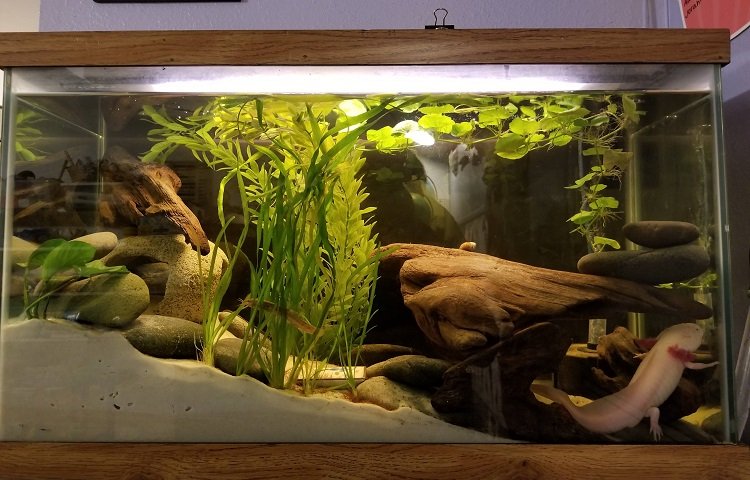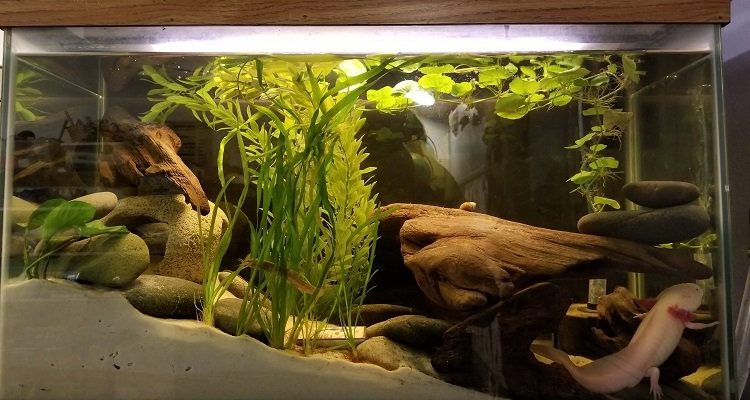
Think of setting up an axolotl tank like preparing a cozy home. Just as you’d want your living space to be comfortable and soothing, your axolotl deserves a well-balanced environment too. The right temperature and water quality can mean the difference between a playful pet and a stressed-out one. So, let’s take a closer look at filters, heaters, and how they contribute to your axolotl’s well-being.
The Importance of Water Quality for Axolotls
Water quality is crucial in any aquarium but is especially vital for axolotls. These little guys are sensitive to changes in their environment, which means keeping their tank clean is priority number one.
Here’s the thing: water quality isn’t just about how clear it looks. It involves monitoring levels of ammonia, nitrites, and nitrates. If these levels get too high, they can harm your axolotl. A good filtration system helps maintain these levels by removing harmful substances. Plus, it keeps the tank clean and reduces the need for frequent water changes, which is a win-win for busy pet owners.
So, what type of filter should you consider? A sponge filter is a popular choice for axolotls because it provides gentle water movement. This is important since axolotls don’t thrive in strong currents. You might want to avoid canister filters or ones that create too much turbulence. Always think of your axolotl’s comfort when making choices about filtration.
Do Axolotls Need a Heater? Understanding Temperature Needs
Axolotls are cold-blooded creatures, meaning their body temperature matches that of their surroundings. In the wild, they typically inhabit cool, fresh waters. Because of this, you want to maintain a temperature range of 60 to 70 degrees Fahrenheit (15 to 21 degrees Celsius) in their tank.
Honestly, most homes have temperatures that can fluctuate, especially during summer or winter. So, while a heater might not be necessary in every case, it can be quite helpful. An adjustable aquarium heater can keep the temperature stable, helping your axolotl feel at ease. Just make sure to set it low enough, as these guys can be sensitive to heat.
If you decide not to use a heater, keep a close eye on the room temperature and consider using a tank thermometer. This monitoring ensures that your axolotl is comfortable and doesn’t face temperature stress.
Choosing Between Heaters and Filters
You might be wondering, “Which is more important for my axolotl, a filter or a heater?” The answer largely depends on your home environment and the specifics of your tank setup.
If you live in a place with temperature extremes, a heater could be essential. However, if the water temperature remains fairly consistent in your home, you might be okay without one. On the flip side, a filter is generally necessary to maintain clean water no matter what.
To sum it up:
- Filter: Essential for clean, safe water.
- Heater: Important depending on your ambient temperature.
Think of it like this: you wouldn’t want to live in a dirty house with perfect climate control, right? Clean water is just as important as comfortable temperatures.
Setting Up Your Axolotl Tank
Creating the perfect environment for your axolotl can feel overwhelming, but it doesn’t have to be. Start with a good-sized tank—at least 20 gallons for one axolotl. This gives them plenty of space to move around. Add a sandy substrate instead of gravel, as this prevents any chance of ingestion.
Next, integrate decorations like hiding spots made from driftwood or caves. Axolotls love to retreat and feel safe. Once your tank is set up, you can install your heater and filter.
Let me explain: when setting up your filter, position it where it won’t create strong currents. You want to maintain some water flow to keep things clean, but not so much that it disturbs your axolotl. Balance is key!
Maintaining a Healthy Environment
Once your tank is all set up, it’s time to think about maintenance. Regular water changes, monitoring parameters, and checking your filters are all parts of keeping a thriving axolotl habitat.
Aim to change 20-30% of the water weekly to keep the levels stable. Test the water every so often to ensure everything stays within the right range. This routine can help you catch potential issues before they become a big problem.
You might want to invest in a water testing kit to make things easier. These kits can give you peace of mind and help you maintain optimal conditions in your axolotl’s home.
Common Mistakes to Avoid
As a new axolotl owner, it’s easy to make a few common mistakes. One of the biggest is assuming that your tank can run without a filter. Remember, axolotls produce waste, and without a filter, water quality can go downhill quickly.
Another mistake is setting the heater too high. A temperature shock can stress your axolotl, so always aim for that cool range. Pay close attention to how your axolotl reacts to changes and adjust accordingly.
Lastly, don’t rush into adding tank mates. Axolotls can be territorial and may not always get along well with other fish. Be cautious, and do your research before introducing new friends into the tank.
Setting up a tank for your axolotl might require some thought and planning, but it’s rewarding to see your pet thrive in a well-cared-for environment. To recap, having a reliable filter is essential for maintaining clean water, while a heater can be beneficial depending on your home’s temperature. Each axolotl is unique, and their needs might vary slightly, so stay observant and adjust your setup accordingly.
With the right care, your axolotl can flourish, enjoying every moment in their cozy aquatic home. Remember, a happy axolotl means a happy owner, and it’s all about creating that perfect balance.

